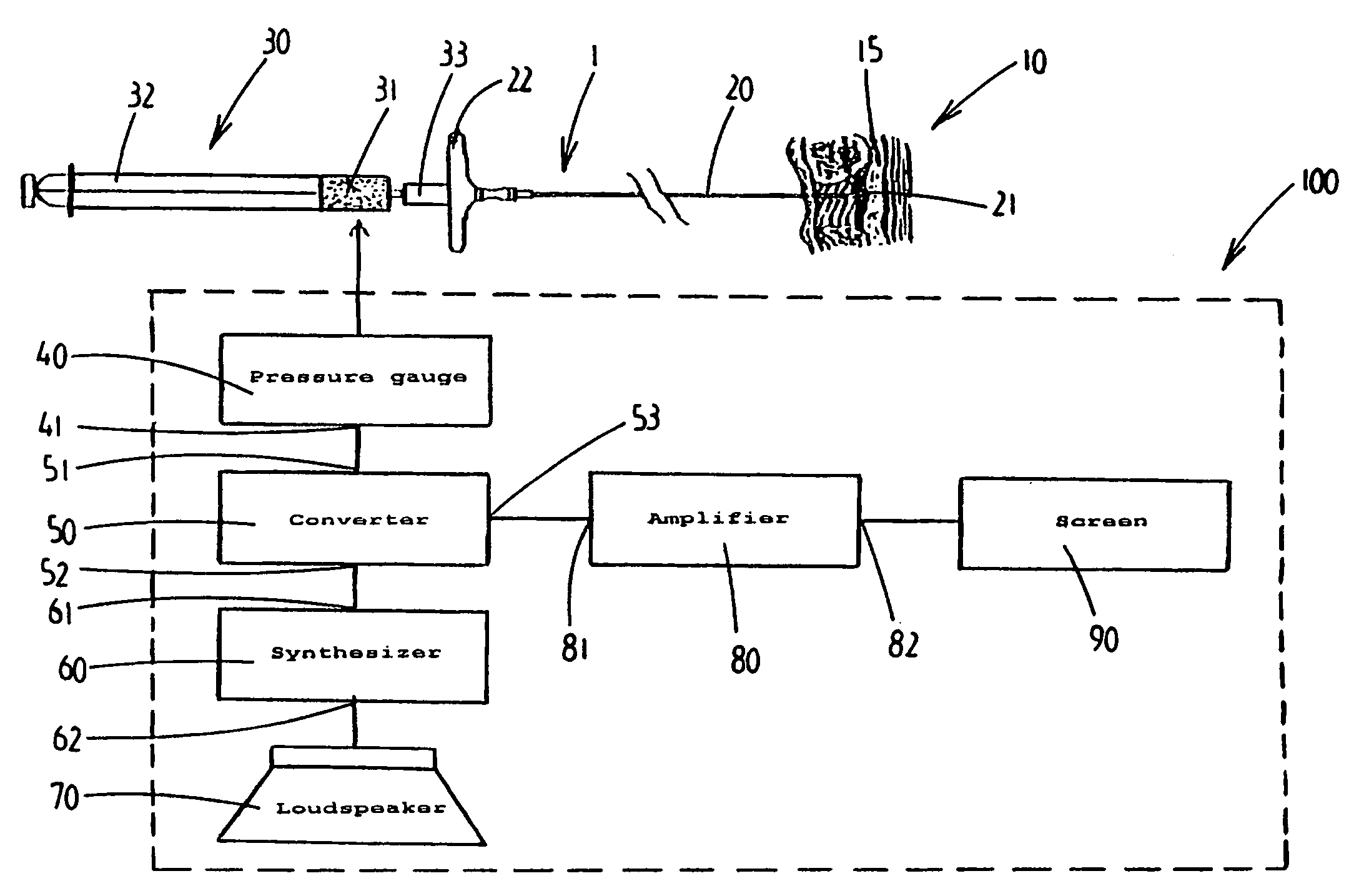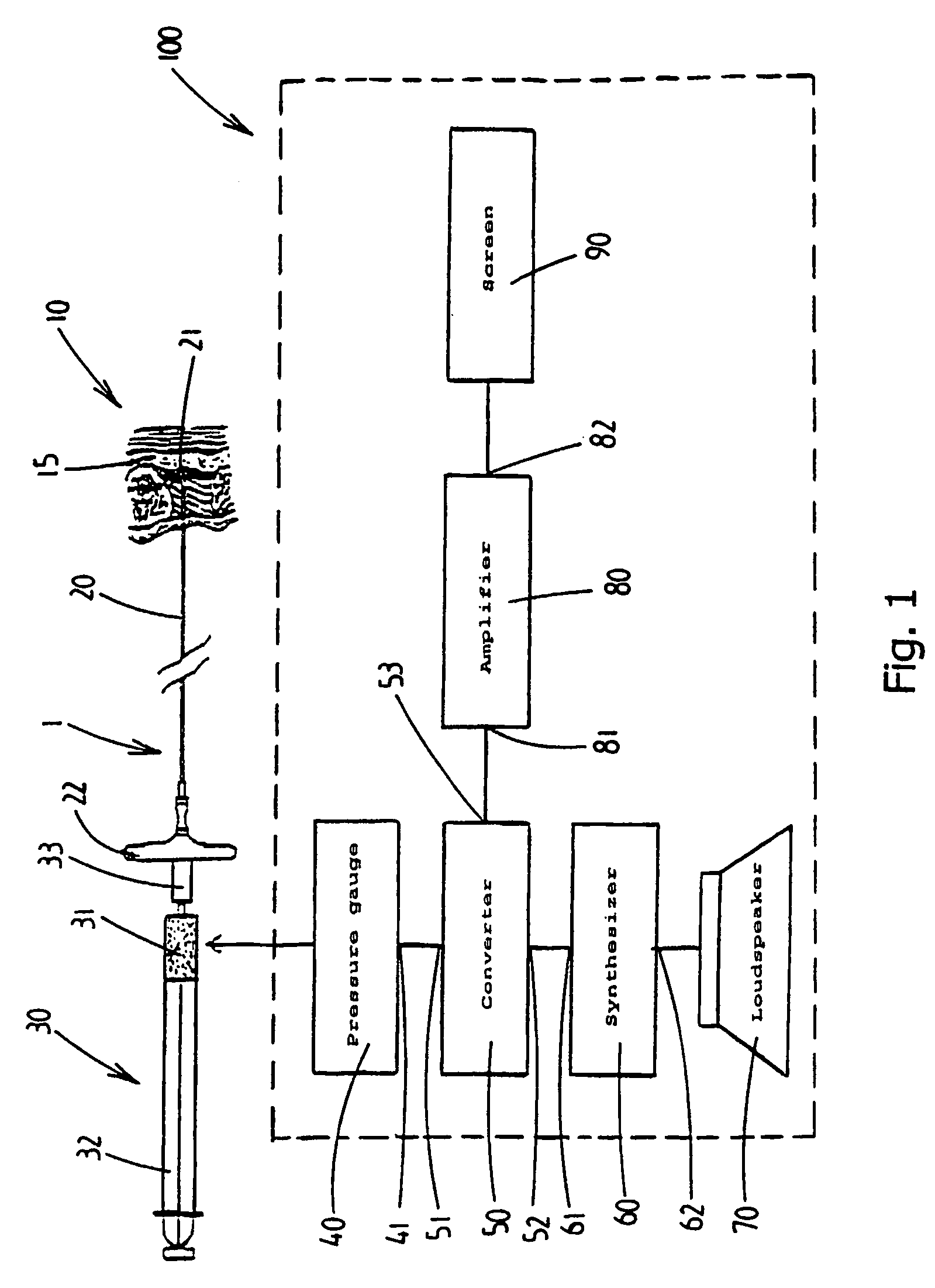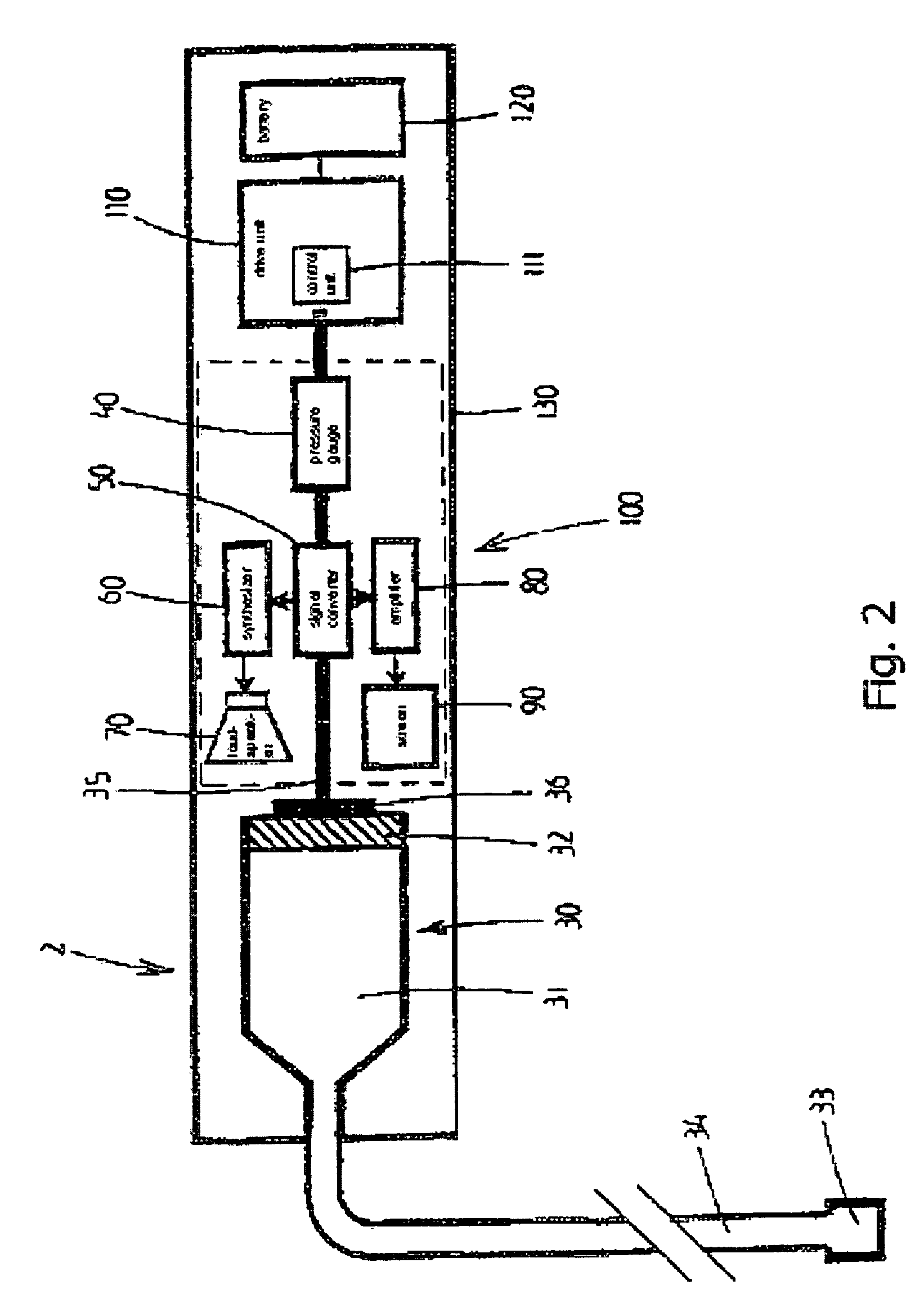Device and method for locating anatomical cavity in a body
a technology for locating an anatomical cavity and a body, which is applied in the direction of positive displacement liquid engine, application, tomography, etc., can solve the problems of needle shooting through (too far) when the anatomical cavity is reached, the risk of the needle being introduced too far, and the risk of the anatomical cavity being reached. to achieve the effect of eliminating or at least reducing the above drawback
- Summary
- Abstract
- Description
- Claims
- Application Information
AI Technical Summary
Benefits of technology
Problems solved by technology
Method used
Image
Examples
Embodiment Construction
[0024]FIG. 1 shows a first preferred embodiment of the device according to the invention, which is denoted overall by reference numeral 1.
[0025]FIG. 1 shows one of the possible uses of the device 1, specifically its use for locating an anatomical cavity, in particular the epidural cavity, in a human body. A small section of a human body is illustrated in cross section in FIG. 1 and is denoted by reference numeral 10. The anatomical cavity or epidural cavity is denoted by reference numeral 15.
[0026]The device 1 comprises a hollow puncture needle 20 with a needle point 21. In the example shown in FIG. 1, the puncture needle 20 has been introduced part way into the body 10 and the needle point 21 is situated in the vicinity of the epidural cavity 15. The puncture needle 20 is provided with a handle 22, which can be held by the person who is handling the puncture needle 20, for example a physician. This handle 22 enables the user to exert a pushing or pulling force on the puncture needl...
PUM
 Login to View More
Login to View More Abstract
Description
Claims
Application Information
 Login to View More
Login to View More - R&D
- Intellectual Property
- Life Sciences
- Materials
- Tech Scout
- Unparalleled Data Quality
- Higher Quality Content
- 60% Fewer Hallucinations
Browse by: Latest US Patents, China's latest patents, Technical Efficacy Thesaurus, Application Domain, Technology Topic, Popular Technical Reports.
© 2025 PatSnap. All rights reserved.Legal|Privacy policy|Modern Slavery Act Transparency Statement|Sitemap|About US| Contact US: help@patsnap.com



